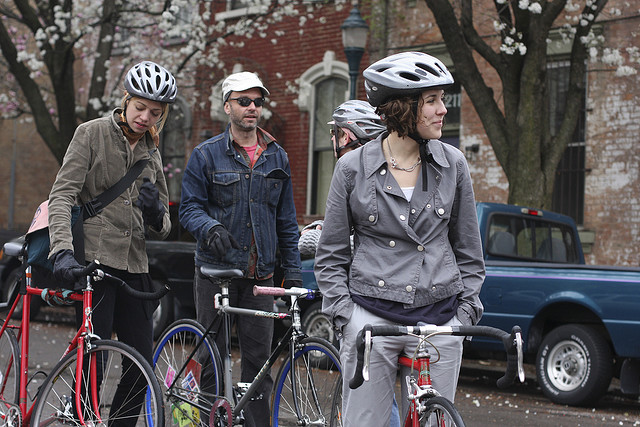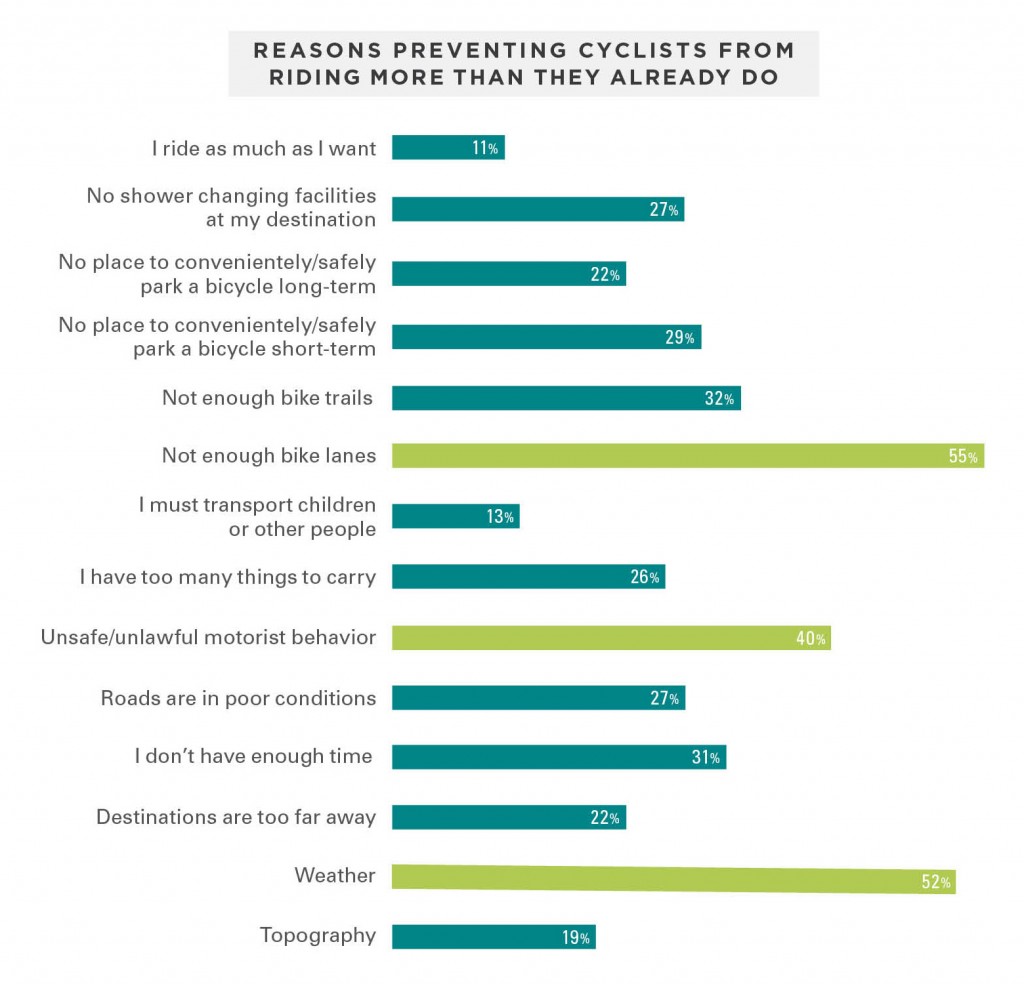[This story was originally published in the Cincinnati Business Courier print edition on February 18, 2011. Visit the original story for more comments, thoughts and opinions on the lagging state of Cincinnati’s bicycle infrastructure – Randy.]
A year after Cincinnati approved massive bicycling reforms little progress has been made in terms of on-the-ground improvements. The city installed only 2.3 miles of on-street facilities in 2010, and currently only has a total of 15.6 miles of on-street facilities city-wide. The number pales in comparison to the Phase 1 goal of 91 miles of on-street facilities by 2015.
To meet the Phase 1 goal, Cincinnati will have to install 75.4 miles of on-street facilities over the next three years. That equates to approximately 25.1 miles annually which would be a 991 percent increase over what was accomplished in 2010.
The numbers come from the second annual Bicycling Report Card just released by the city. While the physical improvements have been nominal at best, bicyclists have noticed an improvement city-wide noting that respect for bicyclists and the completeness of the city’s bicycle network have improved. Overall though, bicyclists continued to give Cincinnati a “C” grade when it comes to Cincinnati being a city for bicycling.
“We have heard from other cities that the first few years of implementation are always the most challenging,” said Department of Transportation & Engineering (DOTE) planner Melissa McVay. “When it comes right down to it, adding bicycle facilities to most streets in Cincinnati is going to require consolidating on-street parking or removing a motor vehicle travel lane, neither of which are particularly popular with most community councils right now.”
McVay went on to say that construction of new on-street bicycle facilities is critically important in terms of getting potential cyclists out of their cars. According to the report card’s survey, the largest deterrent from bicycling more is the lack of bike lanes throughout the city.
“There’s a lot of research out there that shows that these trade-offs are worth it, and how bicycles play a critical role in sustaining vibrant urban areas, so I’m hopeful that we’ll be able to make more and more progress every year,” McVay continued.
Even with the minimal progress made in 2010 in terms of on-street bicycle facilities, city officials have hope going forward that they can still accomplish the goals set forth in the Bicycle Transportation Plan.
“City officials tout safety as a priority. Usually it has to do with crime and auto-related travel, but they really must show a greater commitment to the safety of bicyclists, who are a growing demographic,” explained Christian Huelsman, Green Clifton Committee Chair for Clifton Town Meeting. “Minor commitments to bicycle infrastructure have been lean at best. The new bicycle lanes we do have aren’t even properly signed or labeled.”
According to the DOTE, City Council has been very supportive of the plan and has fully funded the department’s funding requests for 2011 and 2012. This is in addition to the policy changes that were made last year including bicycle parking requirements, the creation of a Bicycle Friendly Destinations Program and an enhanced bicycle safety ordinance.
“I think the reality of the situation is that it’s going to take several years of significant progress before the average cyclist feels like there’s been substantive improvement, in the network and overall,” McVay said. “For comparison, San Francisco cyclists awarded their city a B- overall in 2008, and they have 40 miles of existing bike lanes.”


